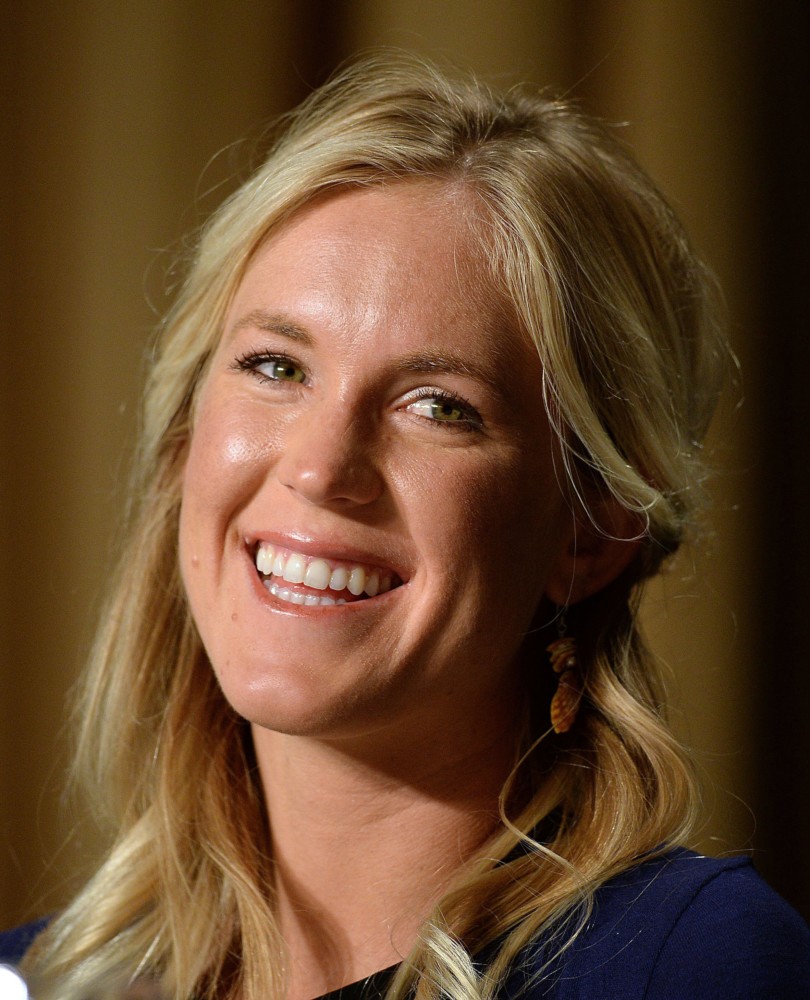By Bruce Jenkins
San Francisco Chronicle
WWR Article Summary (tl;dr) Meet the phenomenal female surfers who are crushing it on the waves and in life.
San Francisco Chronicle
The women’s big-wave surf movement is defined by diligence, style and performance, but also by character — the ability to overcome adversity in its most harrowing forms. Sachi Cunningham, who is battling cancer, is a prime example, but there are many others. Among them:
–Savannah Shaughnessy, 27, of Santa Cruz, has made by far the biggest impression among women at Mavericks. A protégé of Sarah Gerhardt, the first woman to surf Mavericks (1999), she surfs the place expertly and without fear, having first ventured out there at age 16.
“Most of the women surf it very cautiously, and with good reason,” said San Francisco geologist Ryan Seelbach, for years one of the top Mavericks surfers. “Savannah’s different. She’s really hungry. I’ve seen her go for waves, like, wow — that’s impressive. And she’s taken some heavy wipeouts.”
There’s a price to be paid. Shaughnessy was surfing Mavericks last winter when she was sucked over the falls and into a surfer’s nightmare: held underwater by the relentless surf. Struggling to retain her composure, still far from the surface, she felt a second wave pass over her, then a third. Nearly a minute passed before she emerged, gasping and disoriented. “I’m sure I had that look,” she said, having seen it before: the detached, faraway countenance of surfers who have experienced the early stages of drowning. “Normally I don’t get shook up out there, but I was a little queasy after that.”
–There’s a woman who out-surfs the men most everywhere she goes, and it takes merely a glance to realize something’s missing. Bethany Hamilton became a worldwide story in 2003 when, at 13, she had her left arm bitten off by a 14-foot tiger shark on Kauai. Undaunted, she turned to innovation. To get into waves, she grabs a built-in handle on her board and dolphin-kicks (both legs at once) her way into the drop. “Oh my God, she just had a baby and she’s out there riding bombs at Jaws (on Maui),” Bianca Valenti said of Hamilton. “She and I shared a wave there last winter. I was cheering for her. ”
–Among her many ground-breaking accomplishments, Hawaii’s Keala Kennelly was the woman’s breakthrough performer at Teahpuo’o (Tahiti), which has surpassed the Banzai Pipeline on Oahu as the standard for hollow, gigantic, don’t-screw-up-or-else waves. She’s had a number of memorable sessions there, but in 2011, on what was called the heaviest wave ever ridden by a female, Kennelly took a catastrophic wipeout and was slammed headfirst into the reef, opening lacerations that required 40 stitches across her disfigured face.
“That one took me two years to get over,” she said. “You live with that fear for a while.” But she was back for a giant swell in July 2015, saying, “The fear of missing out, and never experiencing that wave again, became more powerful than the fear of doing it. There’s nothing in the world that makes me feel more alive.”
—Maya Gabeira has been a tow-in surfer at Nazare, off the coast of Portugal, on several days of unspeakable wave size. In October 2013 she took a fall and “I lost her,” her Brazilian tow partner, Carlos Burle, said in an interview with Stab magazine. “She was gone for about five minutes. I finally saw her floating face-down in the shorebreak. I jumped off the Jetski, grabbed her in an armlock, and we got to the beach that way. I don’t know how. They administered CPR immediately, and she started breathing. Then they took her away in an ambulance.”
Mortifying. Life-changing. And her big-wave career? Ongoing.
–Cross the highway at Ocean Beach between Lawton and Taraval streets and marvel at the gigantic surf on beautiful, favorable-wind days. If you see a tiny head out there, adorned by a brightly colored cap, that’s Judith Sheridan, a 53-year-old geophysicist held in awe by the local crowd for her swimming and bodysurfing ability. She’s been out at Mavericks, as well, and made several big-wave missions to Hawaii.
She does all this despite having multiple sclerosis for many years, as well as faltering eyesight. She has no interest in discussing these issues, and those who witness her sessions in the water might think she’s completely healthy, for she projects a triathlete’s fitness and quick-to-laugh enthusiasm.
The symptoms of MS can be fickle and without permanence, but Sheridan never quite knows when she will experience facial paralysis, vertigo, non-functioning arms or a sudden fall from weakened legs. She has optic neuritis in both eyes, a complicated way of saying, “I’m pretty blind out there.” Articulate by nature, “I search for words now,” she said. “They have disappeared from my vocabulary and I talk around them.”
She does get tired in the water, sometimes feeling a bit tentative because her body just isn’t cooperating. But as she said recently, “I don’t feel it’s a hardship, and it’s not about me overcoming things with will power. I’m co-existing with my condition. I go out there because I love bodysurfing, because I’m curious about how I’ll feel that day. That’s how I’d like to be known as a person.”














































































































































































































































































































































































